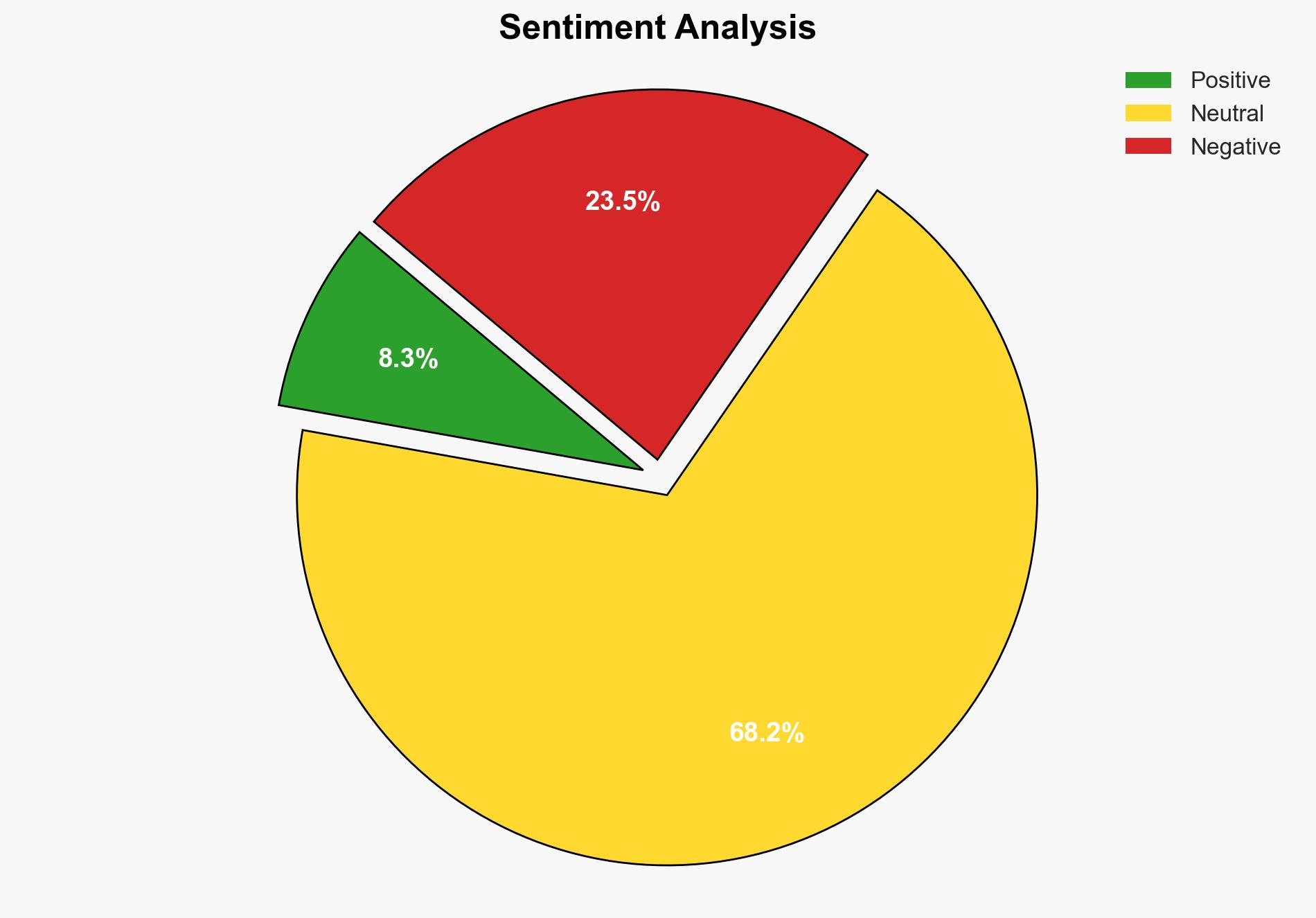Should Seoul Be Worried North Korea Launches More Ballistic Missiles – The National Interest
Published on: 2025-03-15
Intelligence Report: Should Seoul Be Worried North Korea Launches More Ballistic Missiles – The National Interest
1. BLUF (Bottom Line Up Front)
North Korea’s continued development and testing of ballistic missile technology pose a significant threat to regional stability, particularly for South Korea, Japan, and the United States. The recent missile launches, coupled with North Korea’s involvement in the Ukraine conflict, underscore its unpredictable nature and potential for regional destabilization. Immediate diplomatic engagement and enhanced military readiness are recommended to mitigate these threats.
2. Detailed Analysis
The following structured analytic techniques have been applied for this analysis:
General Analysis
North Korea’s recent ballistic missile launches are a direct response to joint military drills conducted by South Korea and its allies. This pattern of provocation highlights North Korea’s strategy of using missile tests as a tool for political signaling. The involvement of North Korean troops in the Ukraine conflict, particularly in the Kursk sector, indicates an attempt to gain combat experience and modernize its military tactics. Despite suffering significant casualties, North Korea’s participation in the conflict may provide valuable lessons for its armed forces.
3. Implications and Strategic Risks
The continued missile tests by North Korea pose a direct threat to the security of South Korea, Japan, and U.S. territories in the region. The potential for miscalculation or escalation remains high, with significant risks to regional stability and economic interests. North Korea’s ambitions, as demonstrated by its involvement in the Ukraine conflict, suggest a broader geopolitical strategy that could further destabilize the Indo-Pacific region.
4. Recommendations and Outlook
Recommendations:
- Enhance diplomatic efforts with North Korea to reduce tensions and prevent further missile tests.
- Increase military readiness and coordination among regional allies to deter potential aggression.
- Invest in missile defense systems and early warning capabilities to protect against potential threats.
Outlook:
In the best-case scenario, diplomatic engagement leads to a reduction in missile tests and improved regional stability. In the worst-case scenario, continued provocations result in military escalation and significant regional conflict. The most likely outcome involves ongoing tensions with intermittent missile tests, requiring sustained vigilance and preparedness.
5. Key Individuals and Entities
The report mentions significant individuals and organizations but does not provide any roles or affiliations. Notable individuals include Stavros Atlamazoglou. Key entities involved are North Korea, South Korea, Japan, the United States, and the Indo-Pacific Command.





